Back in the BC — before coronavirus — days, Alec Gates co-ran a bike tour company. Since his customers were primarily foreign holidaymakers and recently arrived expats, business has almost completely dried up over the last year.
“That now feels like ancient history,” Gates said last weekend, when Cycling Shorts met him at his bike shop in a lane off Chongqing North Road (重慶北路) in Datong District (大同) for a spin around the capital’s historical neighborhoods.
The following is based on the tour that he used to give before the pandemic struck — one that is ideal for anyone wanting to get out on a rental or their own bike during the Lunar New Year holiday, when Taipei’s streets are largely empty of traffic.
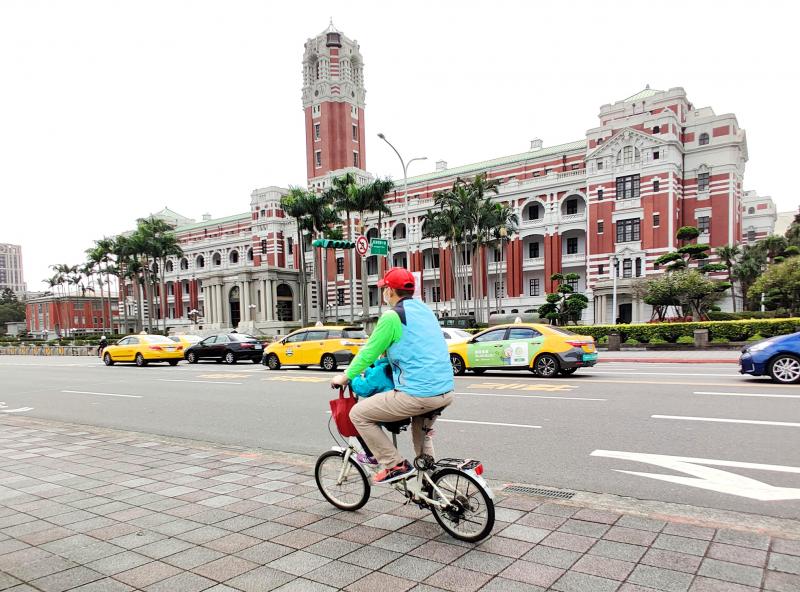
Photo: Mark Caltonhill
SEEING TAIPEI DIFFERENTLY
From Chaoyang Tea Park (朝陽茶葉公園) we head east along Mingsheng West Road (民生西路) to the Shuanglian (雙連) morning market to immerse ourselves in the sights, sounds, smells and, most importantly, tastes of Taiwan’s food culture. The market, like any that dot the capital city’s landscape, is the ideal place to nourish yourself on egg pancakes (蛋餅), rice balls (飯糰) and soymilk before embarking on this four-hour ride.
We then head further east to the Wenchang Temple (文昌宮), known as the divine protector of academics and education. Lined up along an altar are several photocopies of ID cards. The IDs belong to students who will soon take exams, and the offerings of celery (芹; qin in Mandarin) and radishes (菜頭; tsai-tao in Hoklo, also known as Taiwanese) sound like “diligence” (勤勞; qin-lao) and “good omen” (好彩頭; ho tsai-tao).
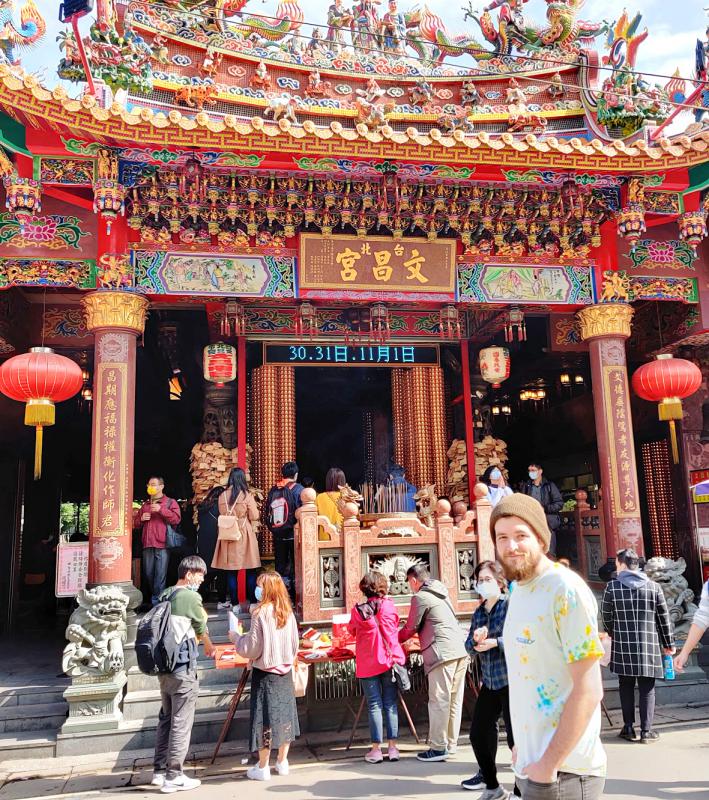
Photo: Mark Caltonhill
Heading south along Zhongshan South Road (中山南路), cyclists get a taste of Taiwan’s modern political history with stops at the Dr Sun Yat-sen Memorial House (國父史蹟館), and, 10 minutes further along the same road, National Chiang Kai-shek Memorial Hall (國立中正紀念堂). The latter has an excellent museum explaining Taiwan’s post-World War II history through images, info boards and objects culled from the reign of former president Chiang Kai-shek (蔣介石). The large complex also features sprawling grounds with ornate gardens with artificial ponds full of carp as well as the monumental National Theater and Concert Hall.
A taste of Taiwan’s earlier history can be seen at the East Gate: its Aboriginal prehistory, Dutch and Spanish settlements in the nation’s southeast and northwest respectively, Han Chinese immigration and the construction of Taipei City with its gates and old city wall, which were quickly torn down under Japanese rule (1895 to 1945).
Like the grounds where Chiang Kai-shek Memorial Hall is located, the 228 Memorial Museum (228紀念館), located less than a five-minute ride away to the northeast, features a large park with statues, pagodas and artificial lakes. It’s also a place where visitors can recall Chiang’s darkest hour on Taiwan, when officials from the Tobacco Monopoly Bureau on Feb. 28, 1947 violently confiscated contraband cigarettes from a female seller. The act sparked an uprising against the Chinese Nationalist Party (KMT), which was violently suppressed. The events led to 38 years of martial law, known as the period of White Terror (白色恐怖), in which tens of thousands of civilians were killed, imprisoned or disappeared.
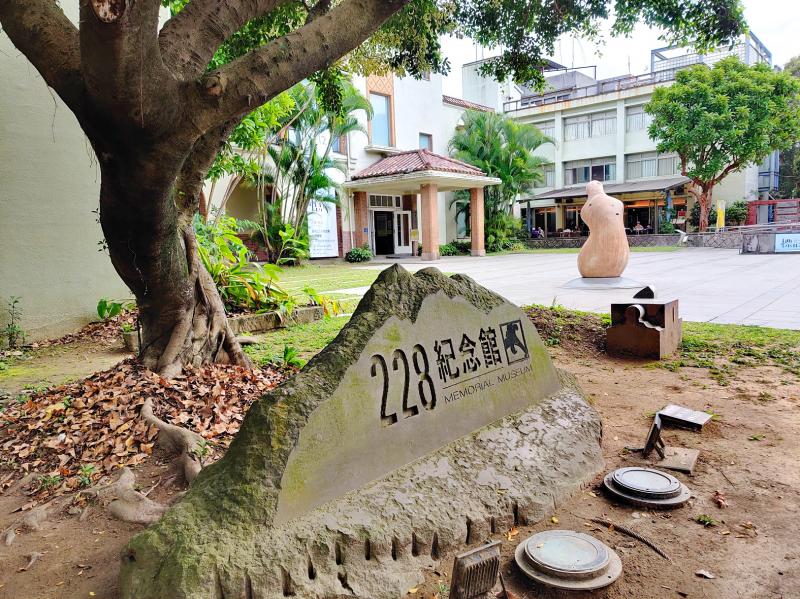
Photo: Mark Caltonhill
Biking a further five minutes west along Baoqing Road (寶慶路), the route arrives at the Ximending (西門町) shopping district, which has experienced something of a renaissance after Taipei’s center of gravity shifted eastward over recent decades.
From here, it’s five minutes along Chengdu Road (成都路) to the scenic Yanping Riverside Park (延平河濱公園), which takes you northward to Dadaocheng Wharf (大稻埕碼頭), one of the city’s oldest and most important, which facilitated domestic and international trade in the 18th and 19th centuries, making Taipei a natural location for the capital when Taiwan finally became a province of the Qing Dynasty in 1887.
A few minutes away from the wharf is the final stop, Dihua Street (迪化街), where all manner of traditional goods are still on sale in shops that have stood for more than a century, many still owned by the original families.
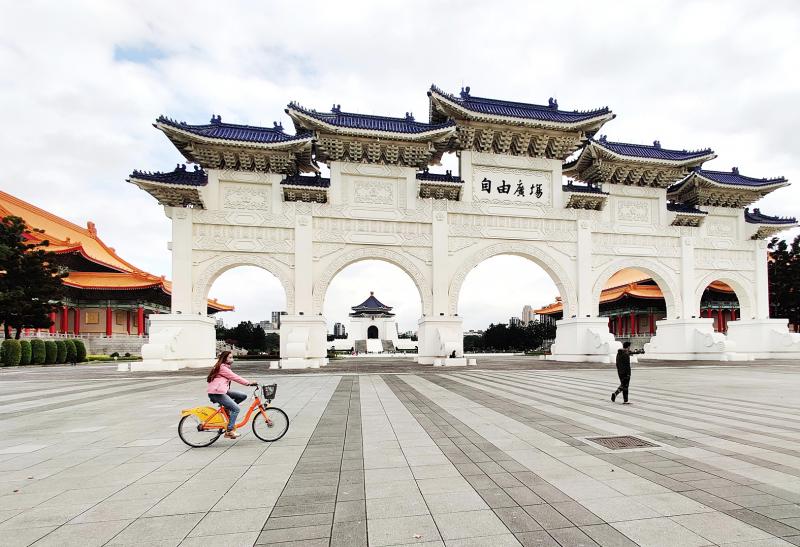
Photo: Mark Caltonhill
January and February normally see hundreds of thousands of shoppers crowding the street for the two-week Lunar New Year market but, like Gates’ bike tours, this has also been canceled this year due to the pandemic.
Mark Caltonhill bikes, and writes, and writes about bikes.
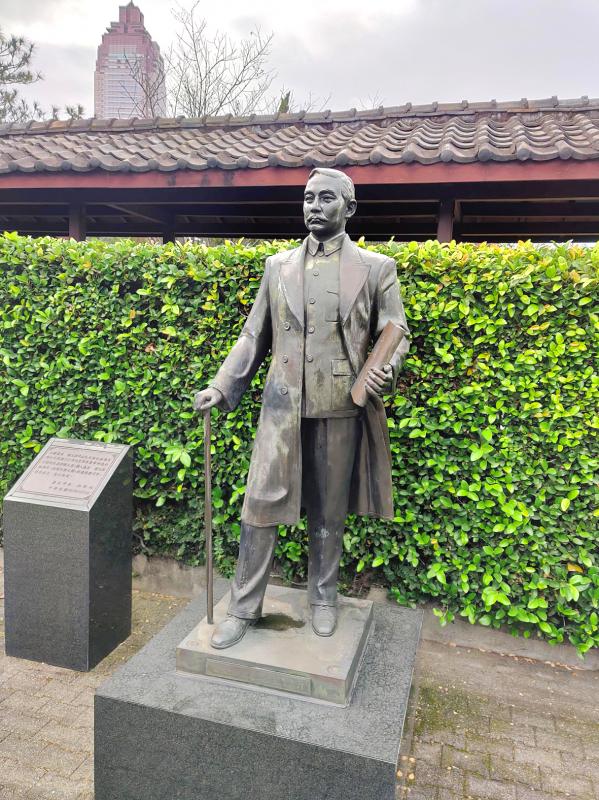
Photo: Mark Caltonhill
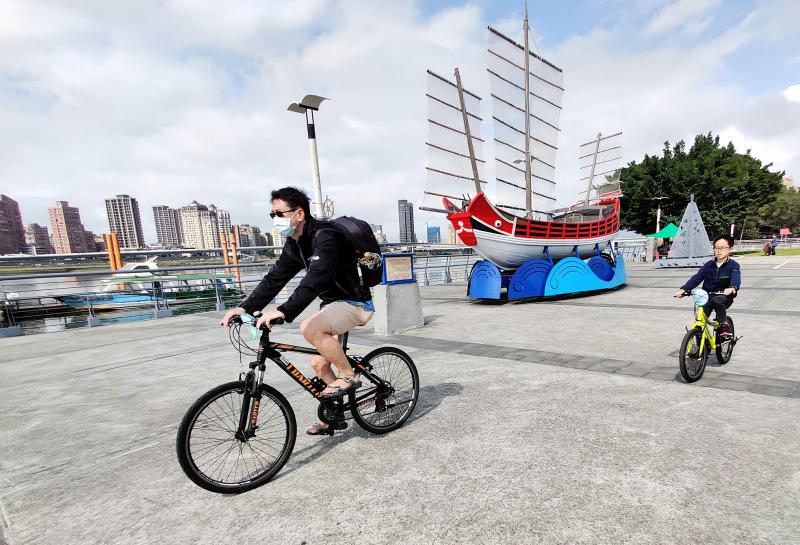
Photo: Mark Caltonhill

“Why does Taiwan identity decline?”a group of researchers lead by University of Nevada political scientist Austin Wang (王宏恩) asked in a recent paper. After all, it is not difficult to explain the rise in Taiwanese identity after the early 1990s. But no model predicted its decline during the 2016-2018 period, they say. After testing various alternative explanations, Wang et al argue that the fall-off in Taiwanese identity during that period is related to voter hedging based on the performance of the Democratic Progressive Party (DPP). Since the DPP is perceived as the guardian of Taiwan identity, when it performs well,

The Taiwan People’s Party (TPP) on May 18 held a rally in Taichung to mark the anniversary of President William Lai’s (賴清德) inauguration on May 20. The title of the rally could be loosely translated to “May 18 recall fraudulent goods” (518退貨ㄌㄨㄚˋ!). Unlike in English, where the terms are the same, “recall” (退貨) in this context refers to product recalls due to damaged, defective or fraudulent merchandise, not the political recalls (罷免) currently dominating the headlines. I attended the rally to determine if the impression was correct that the TPP under party Chairman Huang Kuo-Chang (黃國昌) had little of a

At Computex 2025, Nvidia CEO Jensen Huang (黃仁勳) urged the government to subsidize AI. “All schools in Taiwan must integrate AI into their curricula,” he declared. A few months earlier, he said, “If I were a student today, I’d immediately start using tools like ChatGPT, Gemini Pro and Grok to learn, write and accelerate my thinking.” Huang sees the AI-bullet train leaving the station. And as one of its drivers, he’s worried about youth not getting on board — bad for their careers, and bad for his workforce. As a semiconductor supply-chain powerhouse and AI hub wannabe, Taiwan is seeing

Jade Mountain (玉山) — Taiwan’s highest peak — is the ultimate goal for those attempting a through-hike of the Mountains to Sea National Greenway (山海圳國家綠道), and that’s precisely where we’re headed in this final installment of a quartet of articles covering the Greenway. Picking up the trail at the Tsou tribal villages of Dabang and Tefuye, it’s worth stocking up on provisions before setting off, since — aside from the scant offerings available on the mountain’s Dongpu Lodge (東埔山莊) and Paiyun Lodge’s (排雲山莊) meal service — there’s nowhere to get food from here on out. TEFUYE HISTORIC TRAIL The journey recommences with